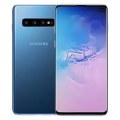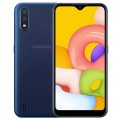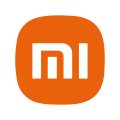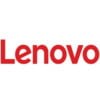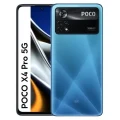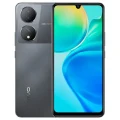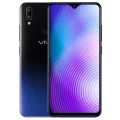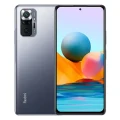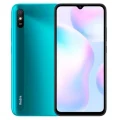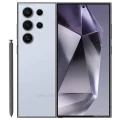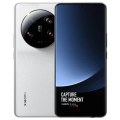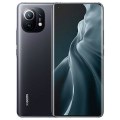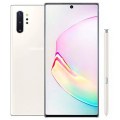- Awesome page
- Latest Mobile
- Smartphones
- Samsung Galaxy M31
Samsung Galaxy M31
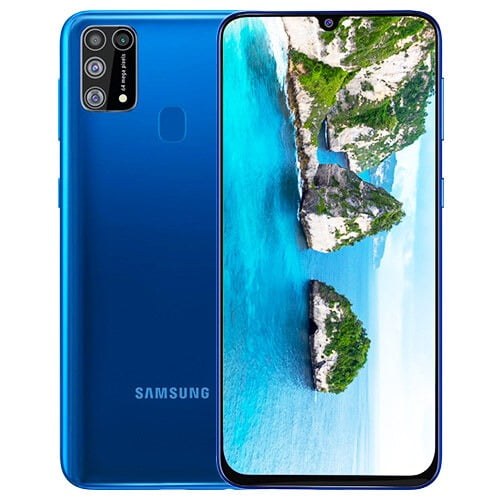


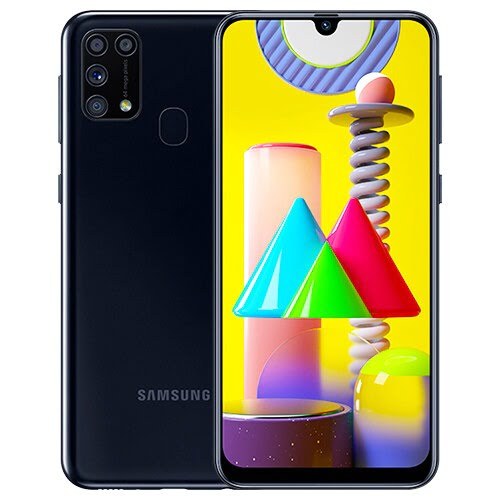
Samsung Galaxy M31 Price in Bangladesh
The 6GB RAM and 64GB storage edition of the Samsung Galaxy M31 costs roughly BDT 19,999 in Bangladesh. With its 6.4-inch Super AMOLED display, Exynos 9611 CPU, and 6000mAh battery, this smartphone is a great option for extended use.
Specifications
General
| Model | Samsung Galaxy M31 |
| Announced | 25-02-2020 |
| Released | 05-03-2020 |
| Status | Available |
| Official price | Official (8GB+128GB) ৳23,999 |
| Unofficial price | Unofficial (6GB+64GB) ৳18,000 / (6GB+128GB) ৳20,000 |
Design
| Dimensions | 159.2 x 75.1 x 8.9 mm (6.27 x 2.96 x 0.35 in) |
| Weight | 191 g (6.74 oz) |
| Colors |
Ocean Blue, Space Black, Red |
Network
| Technology | GSM / CDMA / HSPA / LTE |
| 2G Network |
GSM 850 / 900 / 1800 / 1900 - SIM 1 & SIM 2 |
| 3G Network |
HSDPA 850 / 900 / 1900 / 2100 |
| 4G Network | LTE band 1(2100), 2(1900), 3(1800), 4(1700/2100), 5(850), 7(2600), 8(900), 12(700), 13(700), 17(700), 20(800), 26(850), 28(700), 38(2600), 40(2300), 41(2500), 66(1700/2100) |
| GPRS <strong>GPRS</strong> (General Packet Radio Service) is a packet oriented mobile data service on the 2G and 3G cellular communication system's global system for mobile communications (GSM), Generally, GPRS is used for the purpose of wireless data transfer, such as sharing pictures and videos or browsing the Internet via a mobile phone connection. | |
| EDGE <strong>EDGE</strong> (Enhanced Data GSM Environment) is a wireless network technology generally considered the next step in the 2G network offers data transfer rates up to four times faster than ordinary GSM networks, Generally, EDGE is used for the purpose of wireless data transfer, such as sharing pictures and videos or browsing the Internet via a mobile phone connection. | |
| Speed | HSPA, LTE-A |
Display
| Display Type <strong>Display Technology => </strong> A number of display technologies and types used in mobile phones => TFT (Thin Film Transistor), IPS (In-Place Switching), OLED (Organic Light Emitting Diode), AMOLED (Active-Matrix Organic Light-Emitting Diode), Super AMOLED (an even advanced version of AMOLED), Resistive Touchscreen (Resistive touchscreens contain two layer of conductive material with a very small gap between them which acts as a resistance), Capacitive Touchsceen (Capacitive touchscreen technology consists of a layer of glass coated with a transparent conductor) | Super AMOLED capacitive touchscreen, 16M colors |
| Size | 6.4 inches, 100.5 cm2 (~84.1% screen-to-body ratio) |
| Resolution | 1080 x 2340 pixels, 19.5:9 ratio (~403 ppi density) |
| Features |
Corning Gorilla Glass 3 |
Camera
Main camera
| Camera Setup | Quad |
| Primary <strong>Camera</strong> is able to capture photographs and usually videos, The most important characteristics of a camera are the resolution (measured in megapixels), lens focus type (fixed or automatic), higher megapixel cameras are known to capture higher quality photos, but not always a good measurement of the photos quality. |
64 MP, f/1.8, 26mm (wide), 1/1.72&amp;amp;quot;, 0.8µm, PDAF 8 MP, f/2.2, 12mm (ultrawide), 1/4.0&amp;amp;quot;, 1.12µm 5 MP, f/2.2, 25mm (macro), 1/5.0&amp;amp;quot;, 1.12µm 5 MP, f/2.2, (depth) |
| Features |
LED flash, panorama, HDR HDR |
| Video | 2160p@30fps, 1080p@30fps, gyro-EIS 1080p@30fps |
Selfie camera
| Camera Setup | Single |
| Primary <strong>Camera</strong> is able to capture photographs and usually videos, The most important characteristics of a camera are the resolution (measured in megapixels), lens focus type (fixed or automatic), higher megapixel cameras are known to capture higher quality photos, but not always a good measurement of the photos quality. |
32 MP, f/2.0, 26mm (wide), 1/2.8", 0.8µm |
| Features | HDR |
| Video | 1080p@30fps |
Hardware
| Chipset <strong>Chipset</strong> is a group of integrated circuits designed to perform one or a more dedicated functions, often with real time computing constraints, Popular smartphones are equipped with more advanced embedded chipsets that can do many different tasks depending on their programming. | Exynos 9611 (10nm) |
| CPU <strong>CPU</strong> (Central Processing Unit) mostly known as processors, CPU processes instructions in order to carry out certain functions that make your device operate properly. Processors are often described as the brain of computers, smartphones and tablets, Smartphones and tablets rely on processors to carry out their every task, Processors are an incredibly important factor in selecting any type of computing device, including your smartphone. | Octa-core (4x2.3 GHz Cortex-A73 & 4x1.7 GHz Cortex-A53) |
| GPU <strong>GPU</strong> (Graphics Processing Unit) is a single-chip processor designed to rapidly manipulate and alter memory to accelerate the creation of images in a frame buffer intended for output to a display, This includes things such as lighting effects, object transformations, and 3D motion. | Mali-G72 MP3 |
| RAM (Memory) <strong>RAM</strong> (Random Access Memory) is a type of computer memory that can be accessed randomly, any byte of memory can be accessed without touching the preceding bytes that allows information to be stored and accessed quickly from random locations. RAM is the most common type of memory found in computer systems, smartphones, tablets and other electronic devices. | 6 GB |
| Internal Storage <strong>Internal Storage</strong> is a data storage space (flash memory) mostly used in smartphones, tablets and other electronic devices where operating system, apps, music, photos, videos, files and other user data Is stored. | 64/128 GB UFS 2.1 |
| Sensors <strong>Sensors</strong> are electronic components that detects and responds to some type of input from the physical environment. The specific input could be light, heat, motion, moisture, pressure and location, The output is generally a signal that is converted to use in computing systems, a location sensor, such as a GPS receiver is able to detect current location of your electronic device. |
Fingerprint (rear-mounted), accelerometer, gyro, proximity, compass |
Connectivity
| Bluetooth <strong>Bluetooth</strong> is a wireless communications technology for exchanging data between mobile phones, headsets, computers and other network devices over short distances without wires, Bluetooth technology was primarily designed to support simple wireless networking of personal consumer devices. | 5.0, A2DP, LE |
| Infrared <strong>Infrared</strong> connectivity is an old wireless technology used to connect two electronic devices. It uses a beam of infrared light to transmit information and so requires direct line of sight and operates only at close range. | |
| USB | 2.0, Type-C 1.0 reversible connector |
| GPS <strong>GPS</strong> The Global Positioning System is a satellite-based radio navigation system, GPS permits users to determine their position, velocity and the time 24 hours a day, in all weather, anywhere in the world, In order to locate your position, your device or GPS receiver must have a clear view of the sky. | Yes, with A-GPS, GLONASS, BDS |
| NFC <strong>NFC</strong> (Near field communication) is a set of standards for smartphones and similar devices to establish peer-to-peer radio communications with each other by touching them together or bringing them into proximity, usually no more than a few inches. |
Battery
| Battery Type <strong>Battery Type => </strong> Cell phones run on various kinds of batteries depending on the manufacturer, phone size or shape and features. There are basically four types of cell phone batteries => Lithium Polymer, Lithium Ion, Nickel Metal Hydride and Nickel Cadmium. | Non-Removable Li-Po |
| Capacity <strong>Battery Capacity</strong> is a measure (typically in Amp-hr) of the charge stored by the battery, and is determined by the mass of active material contained in the battery. The battery capacity represents the maximum amount of energy that can be extracted from the battery under certain conditions. | 6000 mAh |
| Charging Charging | Fast battery charging 15W |
Samsung Galaxy M31 Review A User-Friendly Marvel
The Samsung Galaxy M31 has emerged as a popular choice among tech enthusiasts and smartphone buyers alike. Packed with an array of impressive features, this device promises a robust user experience at a competitive price. Whether you’re looking for a reliable camera, stellar battery life, or a high-quality display, the M31 has something to offer. This review will explore the key aspects of the Galaxy M31 to help you decide if it’s the right smartphone for you.
In this comprehensive review, we’ll take a closer look at the design, performance, and unique features of the Samsung Galaxy M31. We’ll also evaluate its value for money compared to other smartphones in its category. By the end of this post, you’ll have a clear understanding of the M31’s strengths and weaknesses and whether it fits your needs.
Stay tuned as we unpack the M31’s design and build quality, display and audio performance, camera capabilities, and more. If you’re a Samsung user or someone considering a switch, this review is tailored just for you.
Design and Build Quality
Samsung has made significant strides in cellphone design, and the Galaxy M31 is no exception. The device sports a sleek design that combines functionality with a modern aesthetic. Its body is crafted from polycarbonate, which provides a sturdy feel while keeping the phone lightweight and portable.
The ergonomic design ensures comfort during extended use. The M31 features rounded edges and a smooth finish, making it easy to hold and operate with one hand. The placement of buttons and ports is intuitive, contributing to the overall user-friendly experience.
Aesthetically, the Galaxy M31 offers a range of color options to suit different tastes. Whether you prefer classic black or vibrant blue, there’s a choice for everyone. The back panel also houses a fingerprint scanner, seamlessly integrated for quick and secure access to your device.
Display and Audio Experience
The Samsung Galaxy M31 boasts a Super AMOLED display, renowned for its vibrant colors and deep contrasts. Measuring 6.4 inches, the Full HD+ screen offers an immersive viewing experience that enhances everything from photos to videos. The resolution is sharp, ensuring clarity whether you’re browsing the web or playing games.
Brightness levels on the M31 are commendable, allowing for comfortable use both indoors and outdoors. The adaptive brightness feature adjusts the screen based on surrounding light conditions, optimizing visibility and battery consumption.
Audio performance is another area where the M31 shines. Equipped with Dolby Atmos support, it delivers a rich audio experience, whether using headphones or the device’s speakers. The sound quality is crisp, with balanced bass and treble, making it a great companion for media consumption.
Performance and Battery Life
At the heart of the Galaxy M31 is the Exynos 9611 processor, supported by 6GB of RAM. This combination ensures smooth multitasking and efficient handling of daily tasks. Whether you’re running multiple apps or playing resource-intensive games, the M31 performs without significant lag.
Battery life is one of the M31’s standout features. With a massive 6,000mAh battery, it offers impressive longevity, easily lasting a full day of heavy use. The device supports fast charging, so you’re never tethered to a power outlet for too long.
Real-world usage scenarios demonstrate the M31’s capability to handle diverse tasks. From streaming videos to navigating GPS, the performance remains consistent and reliable, making it an ideal choice for users who demand more from their smartphones.
Camera Capabilities
The Galaxy M31 is equipped with a versatile quad-camera setup, including a 64MP main sensor, an 8MP ultra-wide lens, a 5MP macro lens, and a 5MP depth sensor. This combination allows for stunning photography across various settings, capturing everything from detailed close-ups to expansive landscapes.
Photo quality is exceptional, with vibrant colors and sharp details. The night mode feature enhances low-light photography, reducing noise and maintaining clarity even in dim settings. Additionally, the device supports 4K video recording, making it a powerful tool for videographers.
Additional features such as AI scene optimization and live focus further enhance the camera’s capabilities, providing users with creative freedom and professional-quality results.
User Interface and Software
Running on Samsung’s One UI 2.0, based on Android 10, the Galaxy M31 offers a seamless and intuitive user experience. The interface is clean and easy to navigate, with customization options that allow users to tailor their devices to their preferences.
Samsung’s unique additions, such as the game booster and digital wellbeing features, add value to the user experience. These tools enhance gaming performance and help users manage their screen time effectively.
Regular software updates from Samsung ensure the M31 remains secure and up-to-date with the latest features, providing peace of mind and a future-proof device.
Value for Money
In terms of pricing, the Samsung Galaxy M31 offers significant bang for your buck. Positioned in the mid-range segment, it competes with similar smartphones by delivering premium features at an affordable price point.
When compared to competitors, the M31 holds its own with a superior display, exceptional battery life, and a robust camera system. For budget-conscious buyers seeking a reliable and feature-rich smartphone, the M31 is a compelling choice.
Overall, the M31’s combination of performance, features, and affordability makes it a standout option in today’s crowded smartphone market.
Conclusion
The Samsung Galaxy M31 successfully blends essential features with user-friendly design, making it a strong contender in the mid-range smartphone market. Its strengths lie in its impressive battery life, vibrant display, and versatile camera capabilities. While there are areas for improvement, such as processing power, the M31 offers excellent value for money.
If you’re a tech enthusiast or a Samsung user considering an upgrade, the M31 is worth exploring. It caters to a wide range of needs and preferences, making it an appealing choice for various users.
